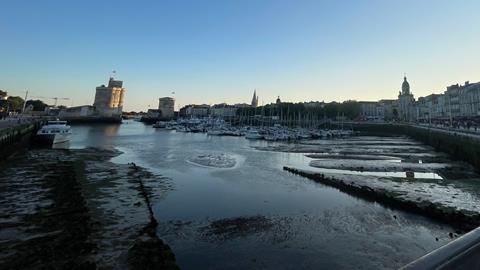Love Nature’s head of content, Alison Barrat, returns from French factual event having found resilience among producers
Heading to Sunny Side of the Doc this year, I reflected on how much the industry has changed, along with my experience at the festival.
The first time I attended, Love Nature was an emerging wildlife and nature brand and my meetings were centered around introducing our vision and programming strategy to attract top-tier wildlife producers and premium co-production partners.

Fast forward to 2025, Love Nature is now celebrating its tenth anniversary and has elevated its presence at Sunny Side in partnership with Blue Ant Studios, Blue Ant Media’s production and rights business, which also distributes and windows Love Nature’s original content to third-party broadcasters and platforms.
Over the last decade, the industry has seen an evolution in the viewing habits of factual audiences across multiple linear, streaming, and digital platforms.
Last week, Sunny Side attracted 2,100 participants from 60 countries, which demonstrates that coming together as an industry is more crucial than ever. My agenda was pre-booked with many meetings, but I did manage to attend a few panel discussions and to moderate one myself on new routes to wildlife storytelling.
What I observed in those meetings and discussions, amid dwindling budgets and technological disruption, was optimism and resilience.
Resilience over resistance
It’s no secret that the commissioning landscape has changed for factual content.
Across the board, production companies shared stories of declining commissions. Natural history is also feeling the pinch. Distributors told me that the number of buyers for natural history content has dropped considerably.
But rather than panicking, companies are adapting smart business strategies.
Co-productions are more front and center than ever before. More producers and broadcasters are leaning into international partnerships as a strategic imperative, not just a nice-to-have.
Beyond co-productions, producers are becoming increasingly sophisticated in stitching together funding from diverse sources - government funds, regional grants, like the CMF (Canada Media Fund), Austria’s RTR subsidies and AVEC (Audio Visual Expenditure Credit) in the UK and even philanthropic foundations.
Embracing the multi-platform universe
The resilience I saw in commissioning and financing models was also reflected in attitudes towards adapting and thriving in a multiplatform world.
In years past, companies were fearful of the changing landscape across channels, streaming and digital platforms, but this year they are just getting on with it. In 2025, FAST and digital channels are just part of the mix. Producers, distributors and platforms alike are up to speed and building strategies that leverage multiple platforms and windows.
Distributors, including our content distribution colleagues at Blue Ant Studios, are deploying a multi-platform strategy: selling the same title across linear, VOD, FAST, and digital platforms.
This also reflects our strategy at Love Nature, in which we partner closely with Blue Ant Studios to window our original natural history programming.
Love Nature’s original commissions air on our own channel carried on linear and streaming platforms around the world, but the rights team at Blue Ant Studios also extends that reach through distribution deals in other markets. It’s a bold rights exploitation strategy that maximizes the reach for our programming and production partners
There’s also a renewed push toward content ownership. Companies that hold their own IP are doubling down on digital platforms, especially YouTube.
Producers are turning to the Google-owned service to find audiences and exploit new original content, and to extract more value from their libraries. Monetising back catalogues on digital is becoming standard practice rather than a side hustle.
Content owners are pulling every lever they can and finding that audiences don’t mind where they watch natural history, as long as they can watch it.
Smart storytelling
Aside from new business models and emerging digital platforms, some of my favourite intel comes from the scrappy ways that indie producers are appealing to audiences, while finding cost-effective, smart ways to tell stories.
Talent-led series allow audiences to experience stories through the eyes and expertise of passionate individuals. A great natural history example of this is Big Wave Productions’ Deep Dive North America, featuring Lizzie Daly. Not only is Lizzie an engaging and authentic host, but her double duty as a free diver and camera operator was a cost-effective means of filming, while also creating beautiful on screen moments with marine wildlife.
In some cases, producers are choosing to invest in equipment, everything from cameras to boats, to help them lower their own budgets. Breakout Productions took this approach while producing Super Shark Highway, as a means of amortizing equipment overhead, but also having the agility to move quickly to capture shark behaviour.
Across the board, producers have pulled out the creative stops, pitching innovative and genre-expanding ideas that will work within today’s funding landscape.
Natural History is as important a genre as ever, with younger audiences gravitating towards environmental themes onscreen. This was demonstrated robustly during the Wildlife Pitch session, which showcased a broad range of ideas in the wildlife genre with an extremely high level of storytelling and creativity in the competition.
Alison Barrat is senior vice president and head of content for Love Nature.









No comments yet